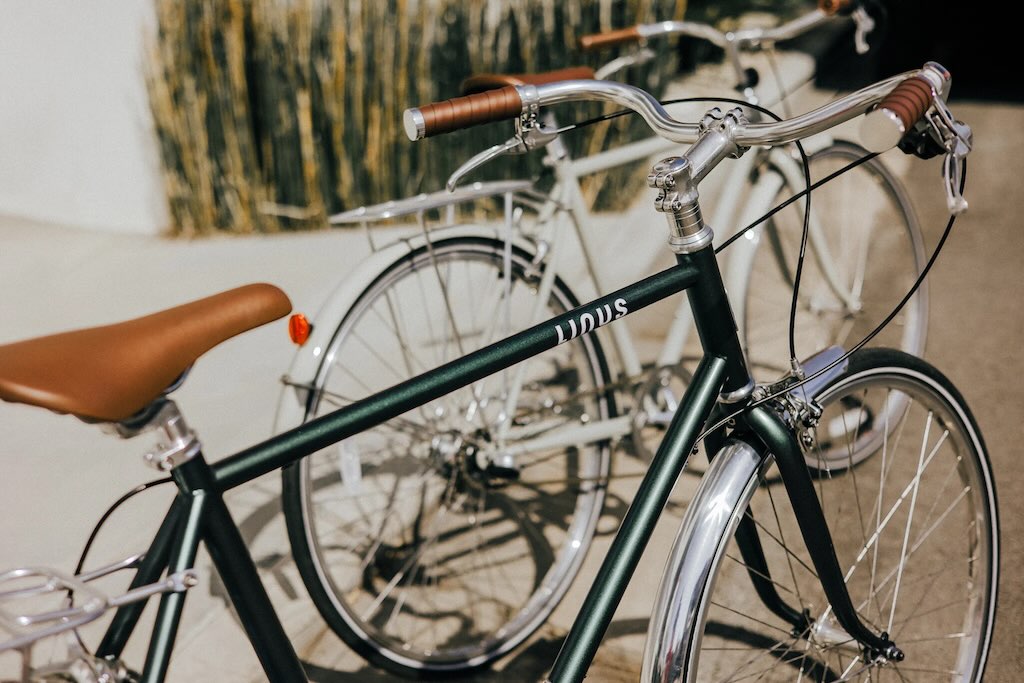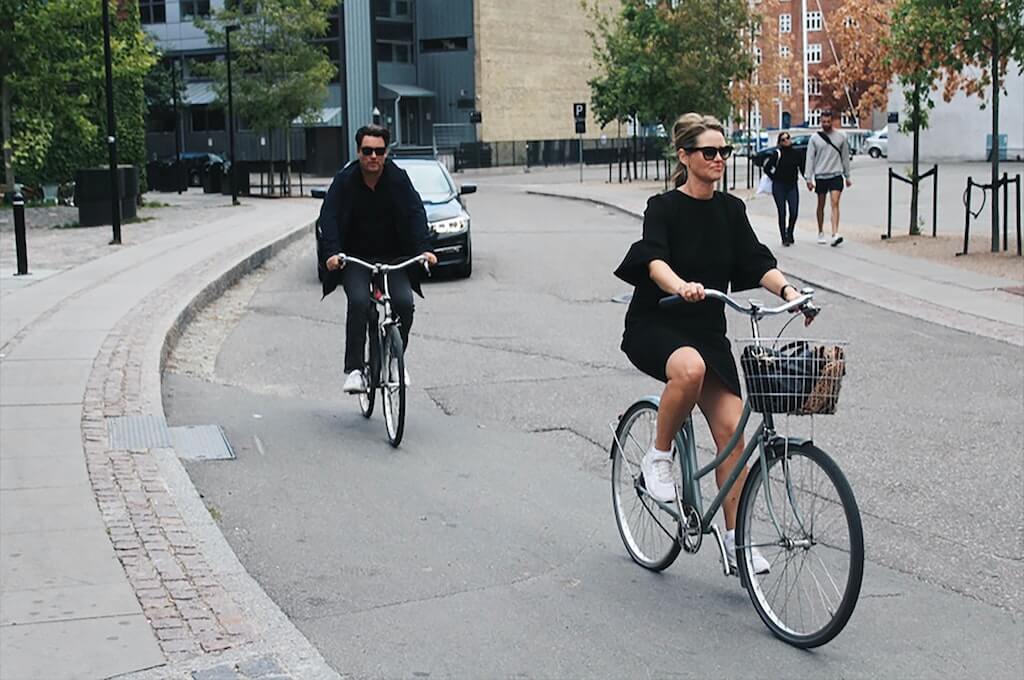It’s spring. New bike season. And upright bicycles—often referred to as Dutch or city bikes—are carving out their own niche in the cycling landscape. This rise in popularity aligns with the growing slow-cycling movement, which emphasizes comfort and accessibility over speed and performance.
With their inviting designs and ergonomic features, upright bikes are redefining the commuter experience.
Top 5 Upright Bicycles to Consider
- Brooklyn Franklin 8 Speed – $599.99 USD
A perfect blend of style and functionality, the Brooklyn Franklin comes with a lightweight aluminum frame and a versatile eight-speed transmission. - Marin Larkspur 1 – $1,099.99
With its sporty yet relaxed geometry, the Marin Larkspur is great for urban adventures, featuring a durable design that handles both city streets and scenic paths. - Linus Roadster Classic – $499
Embracing a timeless look, this bike is not only stylish but also practical, ideal for short commutes and leisurely rides. - Priority Classic Plus – $599
This bike is designed for minimal maintenance, featuring a rust-free belt drive and a robust build that makes it perfect for everyday use. - Brilliant Bicycle Carmen – $550
Known for its chic aesthetics, the Carmen combines functionality with flair, making it a standout choice for urban cyclists.

Linus Bike
A Personal Journey into Upright Cycling
Fifteen years ago, I took a leap of faith and purchased a secondhand sky-blue 1979 Trek road bike. At that time, my cycling experience had been limited to rusty, half-broken bicycles. Pedaling home from the bike shop, I found myself hunched over the low handlebars, and my discomfort quickly became evident.
“My hands hurt,” I complained to a friend who was a former bike mechanic. “The seat hurts. And my neck hurts.”
He suggested I adjust my hand positions, but the reality was that the aggressive posture required by the sleek design was causing more pain than pleasure. I began to wonder: could I modify this bike to sit up more comfortably?
After weeks of trial and error—scouring used-parts bins and adjusting my bike’s components—I transformed the Trek into a quirky, upright cruiser. To my surprise, I discovered a newfound love for cycling. I wanted to ride every day.
The upright riding position has deep roots in cycling history. Dating back to the earliest bicycles, such as velocipedes and penny-farthings, the ability to sit upright has remained a hallmark of many bike designs around the world. Whether it’s the Flying Pigeon in China, Denmark’s utility bikes, or the classic roadsters of India, upright bikes are the standard for practical cycling. With features like racks, internal gear hubs, and chainguards, these bikes are built for convenience, allowing riders to carry cargo and protect their clothes while navigating city streets.
Why Choose Upright Bikes?
Upright bikes are characterized by swept-back handlebars, but their design often includes several other ergonomic features. These may include long, upright stems that attach the handlebars to the frame, wide, shock-absorbing tires, and a relaxed frame geometry that promotes a more comfortable riding position. The result is a bike that is not just a mode of transportation but a source of enjoyment.
This different style of cycling encourages a shift away from the sport-oriented norm prevalent in North America. In many countries, cycling is seen as a viable transportation option rather than just a recreational activity. Riders wear everyday clothes, making the transition to cycling seamless and approachable. The thoughtful design of upright bikes often negates the need for specialized cycling apparel.
Ergonomically, riding in an upright position offers significant benefits. According to Jutta Schneider, a physical therapist and dedicated cyclist, an upright posture reduces strain on the hands, wrists, and shoulders. “It’s a very natural position to be in,” she explains. “Low handlebars and a forward posture can be hard on the neck, especially with added rotation.” Upright riding can relieve pressure on the lumbar spine and lessen the risk of chronic overuse injuries, particularly for those who spend long hours in front of screens.
Expanding the Market for Upright Bikes
Despite the dominance of sport-oriented road and mountain bikes in North American shops, the growing interest in upright bicycles is prompting manufacturers to expand their offerings. Cruisers and city bikes are becoming more prevalent, along with a wider array of aftermarket parts for those looking to convert or upgrade their existing bikes.
The trade-off for a more comfortable ride is increased wind resistance, which may slow down riders slightly. However, in urban settings where traffic and safety are primary concerns, many cyclists find that the benefits of an upright position far outweigh the downsides. As Tony Dattilo, a college instructor who commutes on his 1980s Sekai, quips, “I find myself passing a lot of people hunched over on racing bikes. And when I’m having a beer with my cycling friends and they’re complaining about their backs, I just smile.”

Upright bikes
A Movement Towards Everyday Cycling
As cities strive to promote sustainable transportation options in response to environmental challenges, the upright bicycle emerges as an ideal solution. By prioritizing comfort and practicality, this style of cycling encourages more people to consider biking as a viable alternative for daily travel.
Mark Sanders, a bicycle designer, argues that the cycling industry’s focus has been too narrow, catering primarily to recreational enthusiasts rather than the broader population. “If we compare the cycle industry to the automotive industry,” he states, “it’s like promoting only sports cars while ignoring family vehicles.” By championing upright bicycles as attractive and accessible options, we can encourage more people to embrace cycling as a regular part of their lives.
Conclusion
Upright bikes are not just a trend; they represent a fundamental shift in how we think about cycling. By embracing comfort and practicality, they offer a viable alternative to the fast-paced, performance-driven cycling culture that dominates North America. So, whether you’re commuting to work or simply enjoying a leisurely ride, sitting up and enjoying the ride on an upright bike might just be the best choice for your journey.
To support Momentum please visit our page on Patreon. Thank you.
Anne Mathews has been converting abandoned road bikes into uprights since the late 1990s. She lives in Seattle, where she edits books, writes songs and plays music with Orkestar Zirkonium and The Lonely Coast.







